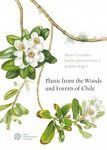Distribution Atlas
By: Antoine Fouquet(Author), Élodie Alice Courtois(Author), Maël Dewynter(Author), Jean Lescure(Preface By), Christian Marty(Foreword By)
480 pages, colour photos, colour illustrations. colour distribution maps
![Atlas des Amphibiens de Guyane [Atlas of Amphibians of French Guiana] Atlas des Amphibiens de Guyane [Atlas of Amphibians of French Guiana]]()
Click to have a closer look
About this book
Customer reviews
Related titles
About this book
Language: French
This atlas follows the eponymous work published in 2000 by the MNHN under the direction of Jean Lescure and Christian Marty. It integrates the considerable progress in knowledge of the taxonomy, distribution, ecology and conservation of amphibians in French Guiana. The distribution maps are based on more than 22,000 verified data points that go beyond the borders of Guiana and justify the status of the species.
Particular attention has also been paid to the evolutionary history of the species, their relationships and the uncertainties that sometimes still remain about their taxonomy. It is necessary to highlight the exceptional educational work carried out by the authors via high-quality iconography illustrating all the species in their living environment.
The work integrates new identification tools based on illustrations by Maël Dewynter. With this work, the authors aim to generate interest in these species and their conservation. Aimed at a wide audience of naturalists, students, teachers, and lovers of Guyana, this atlas is a celebration of Guyanese biodiversity. It also aims to be a reference for all those involved in the conservation of Amazonian biodiversity.
Summary in French:
Cet atlas succède à l’ouvrage éponyme publié en 2000 par le MNHN sous la direction de Jean Lescure et Christian Marty. Il intègre les progrès considérables des connaissances sur la taxonomie, la répartition, l’écologie et la conservation des amphibiens de Guyane française. Les cartes de répartition s’appuient sur plus de 22 000 données vérifiées qui outrepassent les frontières de la Guyane et permettent de justifier le statut des espèces.
Une attention particulière a également été portée à l’histoire évolutive des espèces, leurs relations de parenté et les incertitudes qui demeurent encore parfois à propos de leur taxonomie. Il faut souligner le travail exceptionnel de pédagogie effectué par les auteurs via une iconographie de grande qualité illustrant toutes les espèces dans leur milieu de vie.
L’ouvrage intègre des outils d’identification inédits basés sur les illustrations de Maël Dewynter. Avec cet ouvrage, les auteurs ont pour ambition de susciter l’intérêt pour ces espèces et leur conservation. S’adressant à un large public, aux naturalistes, étudiants, enseignants, amoureux de la Guyane, cet atlas est une célébration de la biodiversité Guyanaise. Il a également pour ambition de constituer une référence pour toutes les personnes engagées dans la conservation de la biodiversité amazonienne.
Customer Reviews
Distribution Atlas
By: Antoine Fouquet(Author), Élodie Alice Courtois(Author), Maël Dewynter(Author), Jean Lescure(Preface By), Christian Marty(Foreword By)
480 pages, colour photos, colour illustrations. colour distribution maps





![Atlas des Amphibiens de Guyane [Atlas of Amphibians of French Guiana] Atlas des Amphibiens de Guyane [Atlas of Amphibians of French Guiana]](http://mediacdn.nhbs.com/jackets/jackets_resizer_xlarge/26/266632.jpg?height=620)
![Atlas des Amphibiens de Guyane [Atlas of Amphibians of French Guiana]](http://mediacdn.nhbs.com/jackets/jackets_resizer/26/266632.jpg)
![Atlas des Amphibiens de Guyane [Atlas of Amphibians of French Guiana]](http://mediacdn.nhbs.com/jackets/jackets_resizer/26/266632_1.jpg)
![Atlas des Amphibiens de Guyane [Atlas of Amphibians of French Guiana]](http://mediacdn.nhbs.com/jackets/jackets_resizer/26/266632_2.jpg)
![Atlas des Amphibiens de Guyane [Atlas of Amphibians of French Guiana]](http://mediacdn.nhbs.com/jackets/jackets_resizer/26/266632_3.jpg)




![Écologie Acoustique des Chiroptères d'Europe [Acoustic Ecology of European Bats]](http://mediacdn.nhbs.com/jackets/jackets_resizer_medium/22/224996.jpg?height=150&width=103)
![Naïades et Autres Bivalves d'Eau Douce de France [Naiades and Other Freshwater Bivalves of France]](http://mediacdn.nhbs.com/jackets/jackets_resizer_medium/23/239318.jpg?height=150&width=103)
![Coraux Constructeurs de Récifs des Caraïbes [Coral Reef Builders of the Caribbean]](http://mediacdn.nhbs.com/jackets/jackets_resizer_medium/24/247989.jpg?height=150&width=103)
![Coraux Constructeurs de Récifs des Caraïbes [Coral Reef Builders of the Caribbean]](http://mediacdn.nhbs.com/jackets/jackets_resizer_medium/24/249211.jpg?height=150&width=99)

![Atlas des Amphibiens et des Reptiles Terrestres de l'Archipel des Comores [Atlas of Amphibians and Terrestrial Reptiles of the Comoros Archipelago]](http://mediacdn.nhbs.com/jackets/jackets_resizer_medium/24/247858.jpg?height=150&width=103)
![Atlas des Amphibiens et Reptiles de Martinique [Atlas of Amphibians and Reptiles of Martinique]](http://mediacdn.nhbs.com/jackets/jackets_resizer_medium/24/243565.jpg?height=150&width=104)
![La Flore Illustrée de Mayotte [The Illustrated Flora of Mayotte]](http://mediacdn.nhbs.com/jackets/jackets_resizer_medium/24/249350.jpg?height=150&width=106)

![Árvores Brasileiras, Volume 1: Manual de Identificação e Cultivo de Plantas Arbóreas Nativas do Brasil [Brazilian Trees, Volume 1: Identification and Cultivation Manual of Native Brazilian Arboreal Plants]](http://mediacdn.nhbs.com/jackets/jackets_resizer_medium/25/255528.jpg?height=150&width=102)



![Gramineas de Bolivia [Gramineas of Bolivia]](http://mediacdn.nhbs.com/jackets/jackets_resizer_medium/81/81508.jpg?height=150&width=94)




![Costa Rica: Tropical Flowers [English / Spanish]](http://mediacdn.nhbs.com/jackets/jackets_resizer_medium/19/195410.jpg?height=150&width=64)

![Árvores Brasileiras, Volume 3: Manual de Identificação e Cultivo de Plantas Arbóreas Nativas do Brasil [Brazilian Trees, Volume 3: Identification and Cultivation Manual of Native Brazilian Arboreal Plants]](http://mediacdn.nhbs.com/jackets/jackets_resizer_medium/25/255530.jpg?height=150&width=103)
![Les Papillons de Jour du Maroc: Un Guide d'Identification et de Bioindication [Butterflies of Morocco: Identification and Bioindication Guide]](http://mediacdn.nhbs.com/jackets/jackets_resizer_medium/17/172979.jpg?height=150&width=101)
![Atlas des Oiseaux Migrateurs de France [Atlas of Migratory Birds of France] (2-Volume Set)](http://mediacdn.nhbs.com/jackets/jackets_resizer_medium/25/257183.jpg?height=150&width=102)
![La Gélinotte des Bois [The Wood Grouse]](http://mediacdn.nhbs.com/jackets/jackets_resizer_medium/25/254772.jpg?height=150&width=107)
![Cahier d'Identification des Orthoptères de France, Belgique, Luxembourg & Suisse [Identification Guide to the Orthoptera of France, Belgium, Luxembourg and Switzerland]](http://mediacdn.nhbs.com/jackets/jackets_resizer_medium/26/265812.jpg?height=150&width=103)

![Carex de France: Manuel d'Identification de Terrain [Sedges of France: Manual to Field Identification]](http://mediacdn.nhbs.com/jackets/jackets_resizer_medium/25/257097.jpg?height=150&width=101)
![Les Bryophytes de France, Tome 1: Anthocérotes et Hépatiques [The Bryophytes of France, Volume 1: Hornworts and Liverworts]](http://mediacdn.nhbs.com/jackets/jackets_resizer_medium/25/252427.jpg?height=150&width=99)
![Les Bryophytes de France, Tome 2: Pleurocarpes et Sphagnales [The Bryophytes of France, Volume 2: Pleurocarpous and Sphagnum Moss]](http://mediacdn.nhbs.com/jackets/jackets_resizer_medium/26/266029.jpg?height=150&width=107)
![Oiseaux de Nouvelle-Calédonie: Grande Terre, Îles Loyauté et Archipels Éloignés [Birds of New Caledonia: Grande Terre, Loyalty Islands and Remote Archipelagos]](http://mediacdn.nhbs.com/jackets/jackets_resizer_medium/26/263909.jpg?height=150&width=103)
![Les Fougères et Plantes Alliées d'Europe [Ferns and Allied Plants of Europe]](http://mediacdn.nhbs.com/jackets/jackets_resizer_medium/25/254775.jpg?height=150&width=101)
![Les Poissons d'Eau Douce de France [Freshwater Fish of France]](http://mediacdn.nhbs.com/jackets/jackets_resizer_medium/25/252425.jpg?height=150&width=117)
![Oiseaux de Guyane: Manuel d'identification [Birds of Guyana: Identification Handbook]](http://mediacdn.nhbs.com/jackets/jackets_resizer_medium/26/263839.jpg?height=150&width=104)